April 24, 2012 - Patuxent River Naval Air Museum |
| My Dad and I drove
down to Patuxent River to visit the small Naval Air Museum. It was a
nice day and a pleasant hour and a half drive. I've been to
this museum once before, so long ago I did not remember a single thing
about it. |
|
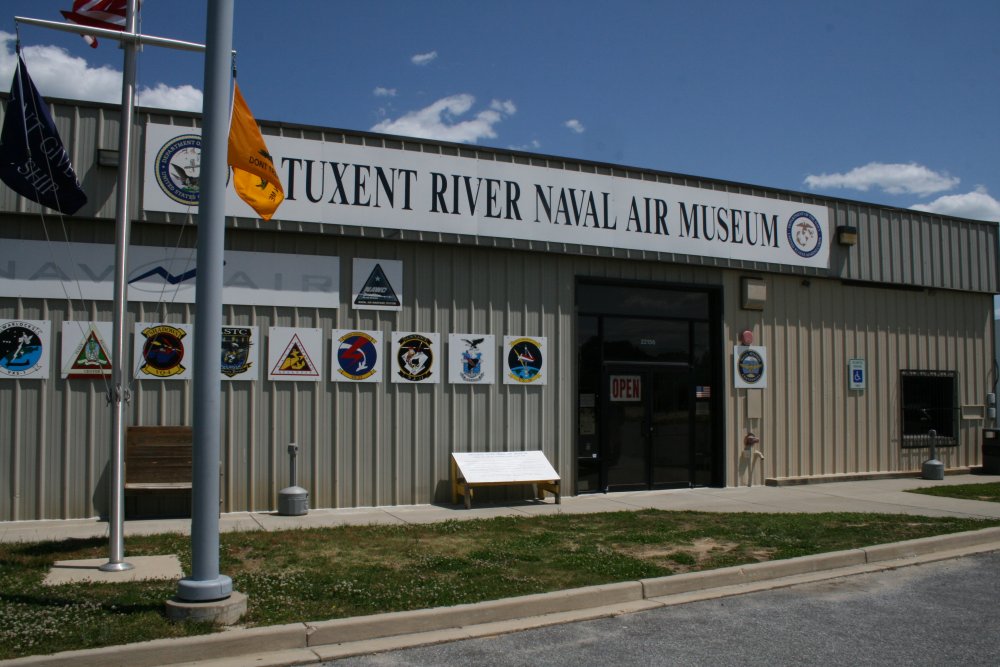 |
|
Near the entrance was this model of an
Escort Carrier. My Dad liked it because it was the this type ship he
did his carrier landings on in a T-6 during his Naval Aviator training
days. The model is of USS
Commencement Bay (CVE-105). |
|
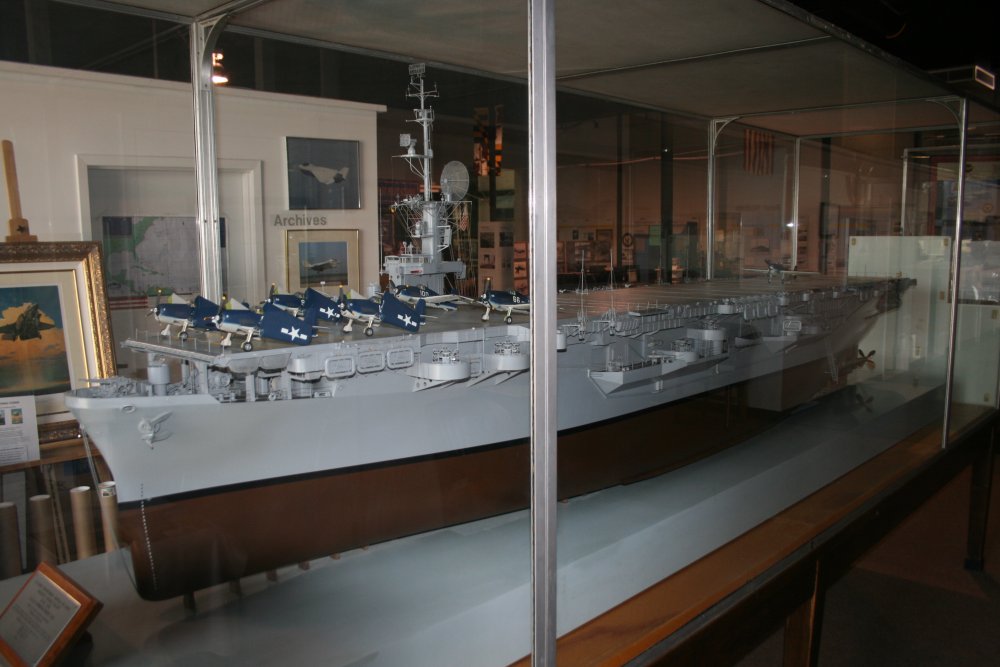 |
|
| Surprisingly,
one area of the museum was about air antisubmarine warfare and specifically
the mighty P-3 Orion which my Dad flew and I flew in. |
|
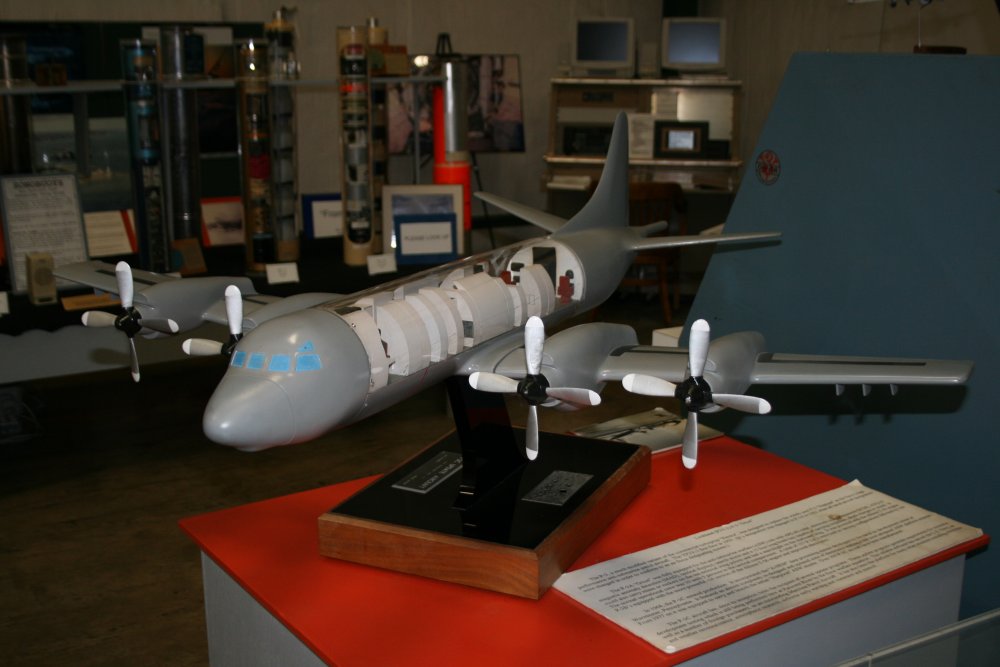 |
|
And this is an Allison T-56 engine which
powers the P-3 (and C-130 & E-2). It consists of a jet
engine at the rear along with a reduction gear unit which slows things
down from 10,000 rpm to 1020 rpm (the prop speed). My Dad knew the
exact numbers. |
|
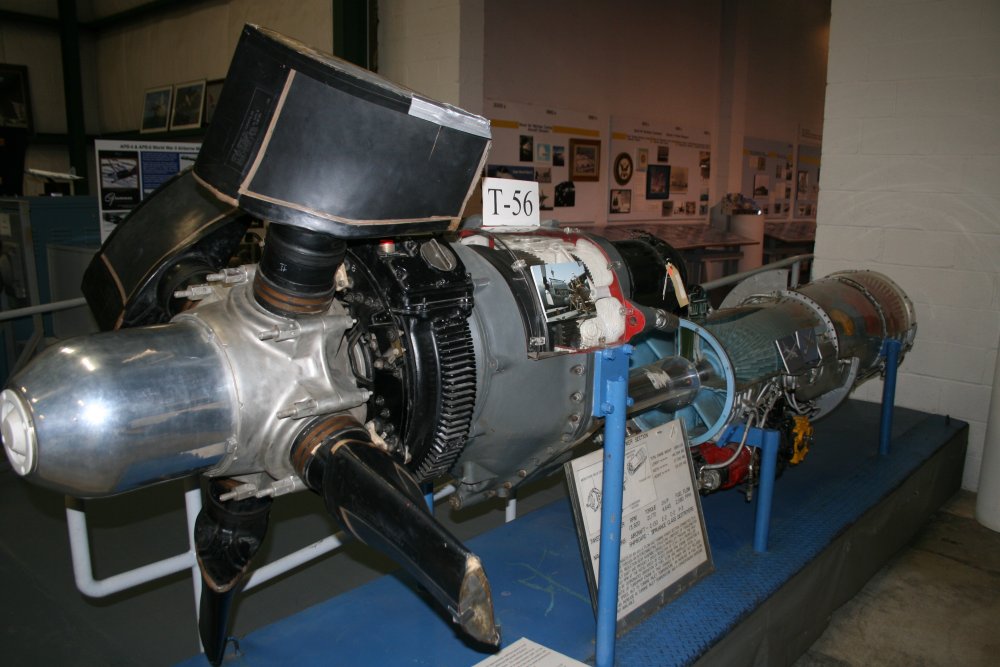 |
|
| A
collection of sonobuoys
which brought back memories. We'd try to find submarines
and then track them by dropping these sonobuoys out of the belly of
the P-3. I personally dropped hundreds of the SSQ-53
Difar buoy, the blue one in the middle, which was passive. We would listen
for the sub. The red one on the left is the SSQ-62 Dicass,
which was an active -- pinging -- buoy. The nickname for that
one was "Cadillac" because it was said to have cost as much as
a Cadillac. "I just dropped a Cadillac into the Ocean". I didn't drop
too many of those. The gold one was SSQ-77 Vlad which I don't
think I ever dropped. It was kind of interesting to see
the insides of the buoys. |
|
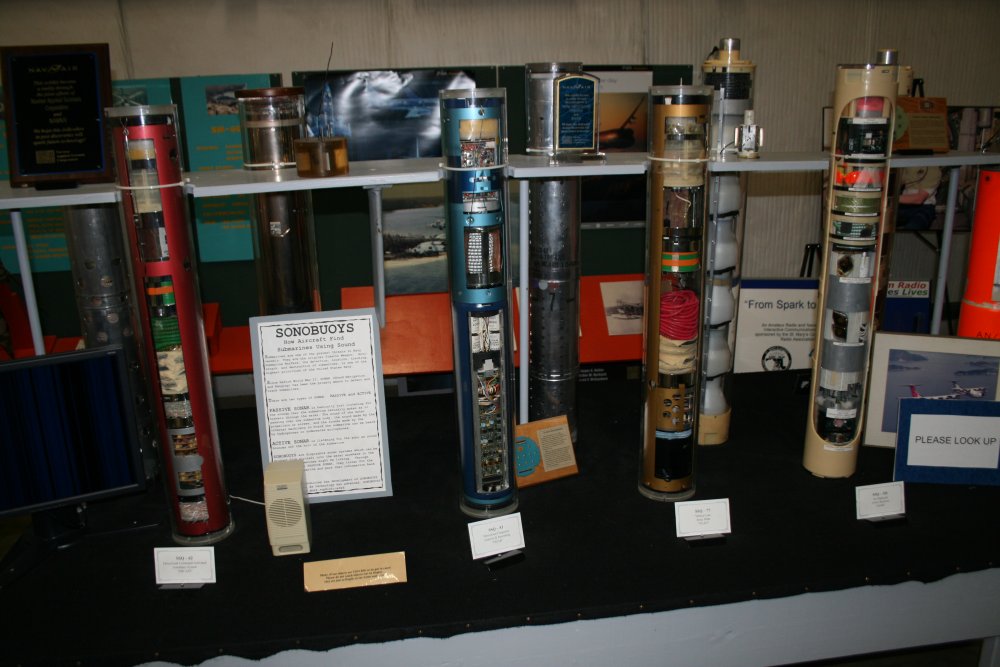 |
|
| I was surprised to
see one of these in a museum. When I flew in P-3s it was
classified. It is an AQA-7 Acoustic Processor. The sonobuoys
sent their acoustic data to this unit via VHF radio. This box --
along with other black boxes not pictured -- processed the acoustic raw
signals into a display and on paper. Enlisted crewmen would
monitor and adjust the settings and pass the info to the Tactical
Coordinator. |
|
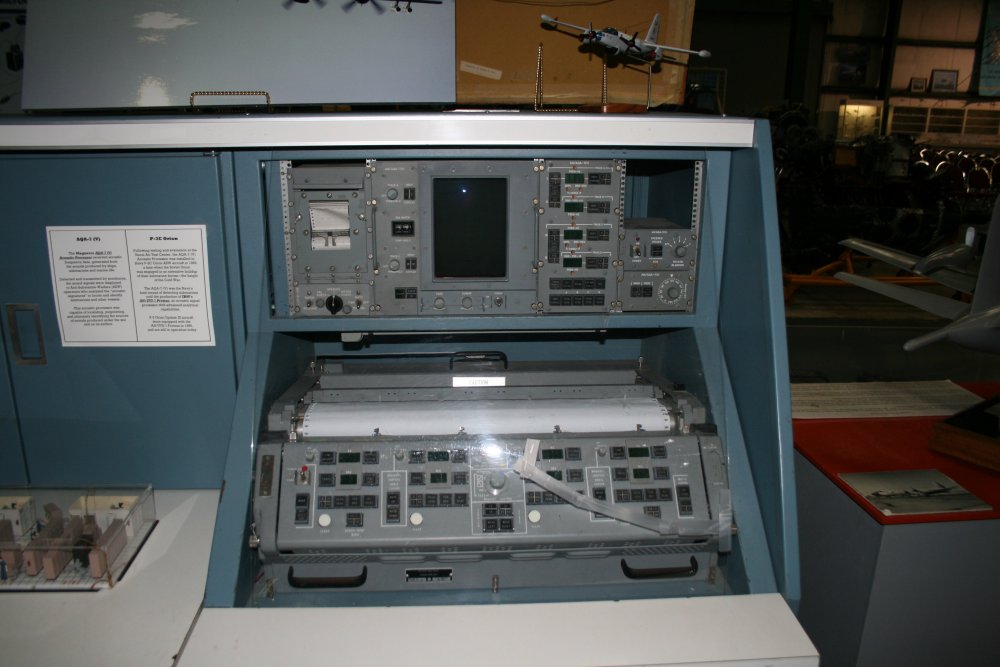 |
|
| The 1911 Curtiss
A-1 "Triad" was the Navy's
first airplane. This replica looks airworthy to me. I want
to fly it. |
|
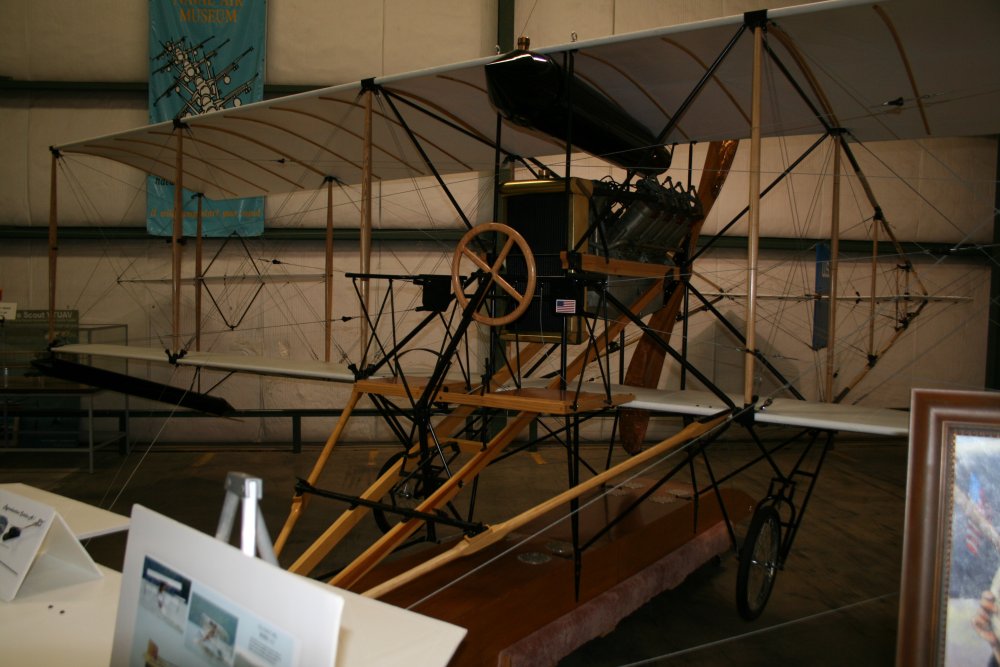 |
|
|
We headed outside to the static display
area. Patuxent River Naval Air Station hosts the Navy's Test Pilot
School and is where the Navy does a lot of its flight testing. Many
of these planes in this area were used here for testing
purposes. |
|
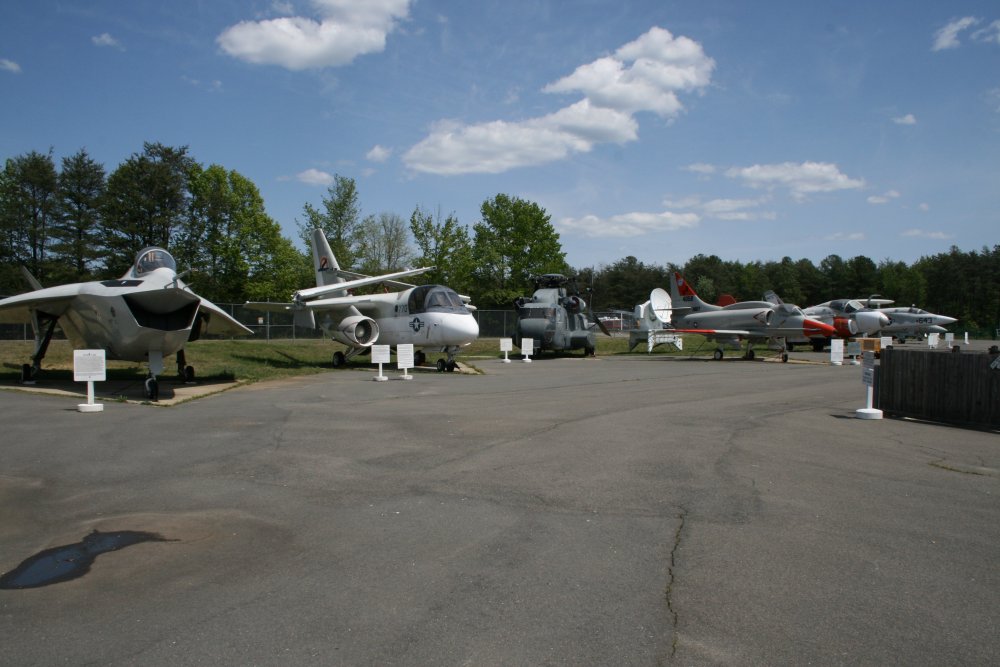 |
|
|
|
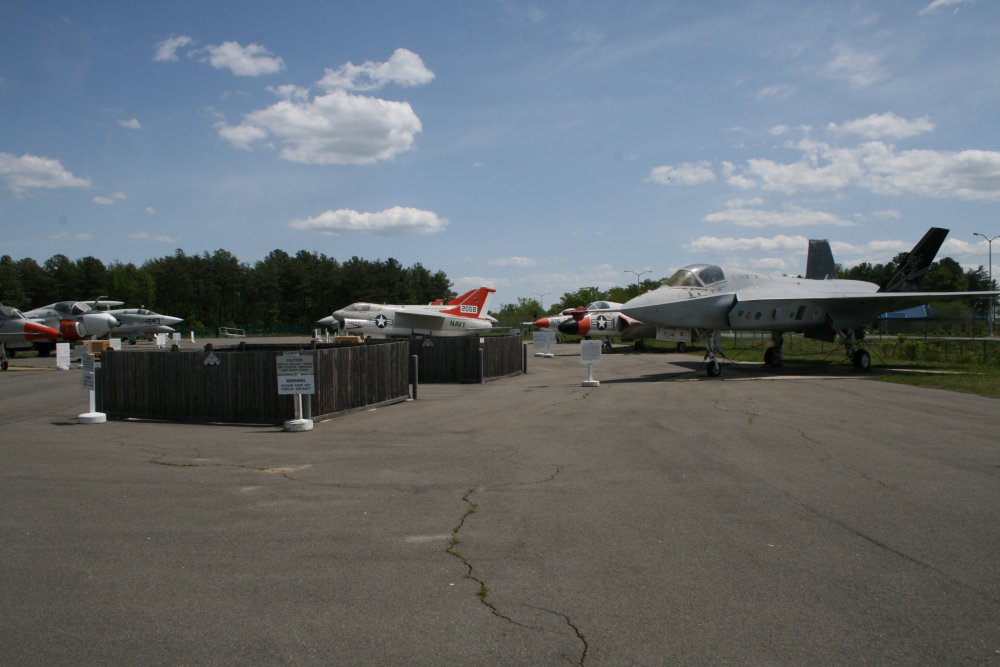 |
|
The Boeing X-32, which lost out
to the Lockheed Martin X-35 in the Joint Strike Fighter Program competition back
in 2000-2001. Frankly, that was probably a good thing. I mean,
come on, this plane just does not look serious. |
|
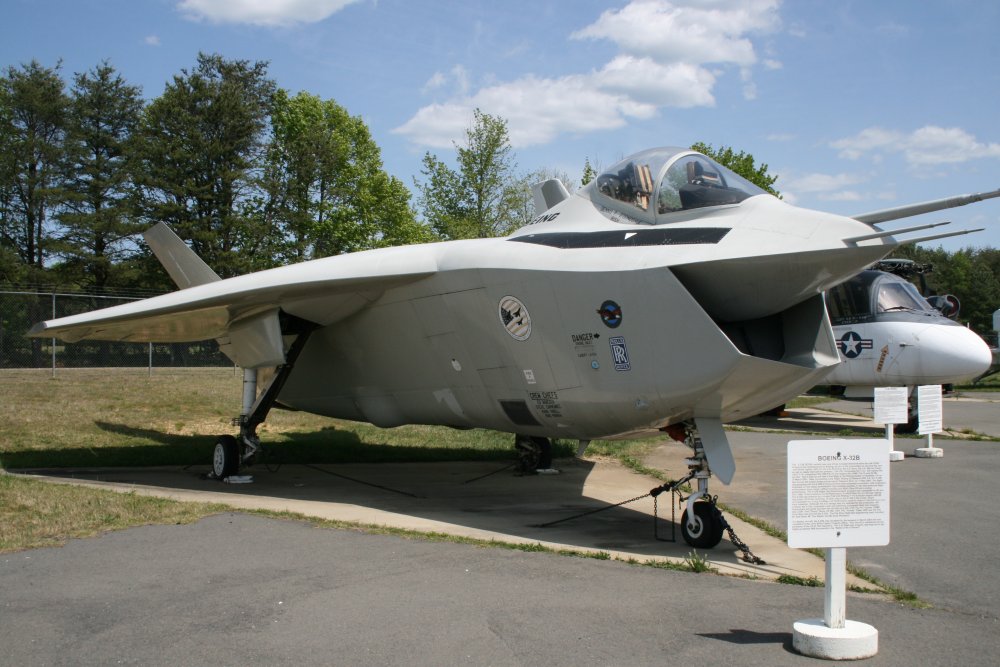 |
|
|
Now this is the X-35 which won the competition. It looks
like a fighter plane.
Unfortunately, here it is 2012 and the plane still
isn't in the fleet. And the costs have escalated
to something like $160 million apiece, which means the Navy (and the
Air Force and Marines) won't be able to buy as many as they
need. The military's procurement system is
broken. It should not takes 10+ years
to get a new plane in service after it flies.
A single fighter
plane costs $160 million? The Air Force's F-22 Raptor
fighter supposedly costs $460 million apiece! The Air
Force could only afford to buy 180 of them. Some call that unilaterial
disarmament.
|
|
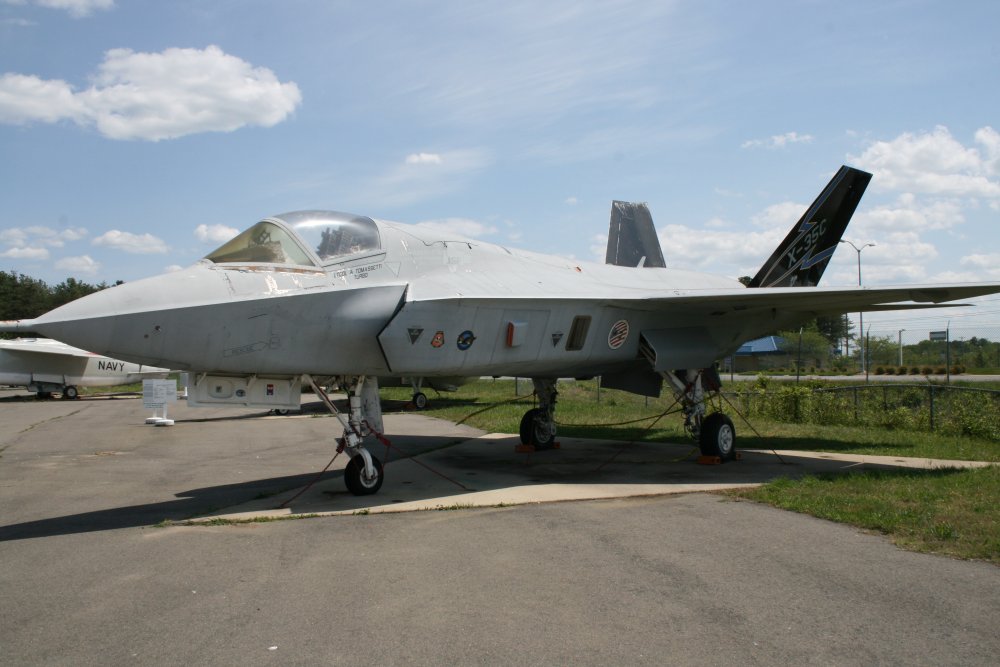 |
|
| This is an S-3 Viking -- the
carrier-based equivalent of the P-3 -- which joined the fleet in 1974. It
basically had everything the P-3 had -- the same acoustic
processor, sonobuoys, aerial torpedo, radar, and a tactical system
which could be operated by 3 people, plus the pilot. But
it could not stay on-station nearly as long as a P-3 could, and was
constrained by the carrier deck cycle. In addition to anti-submarine
warfare, it did surface surveillance and even aerial
tanking. I'm guessing it was an asset to the Battle Group Commander. Nevertheless, it
was retired from front-line fleet service in 2009. |
|
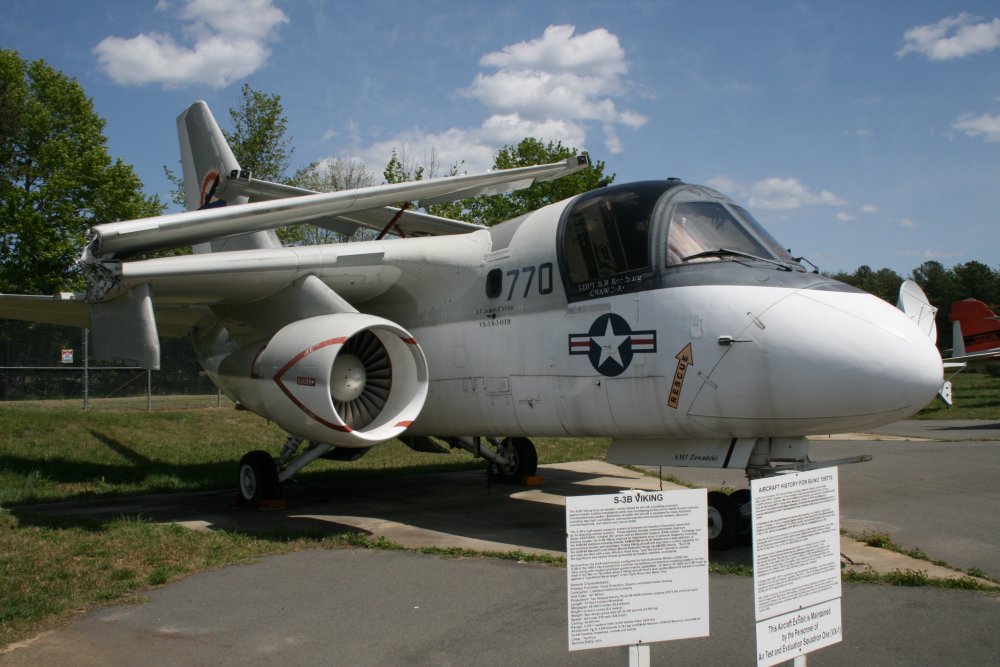 |
|
| This huge
helicopter is a CH-53A Sea Stalllion, predecessor of our largest
helicopter today, the CH53E. |
|
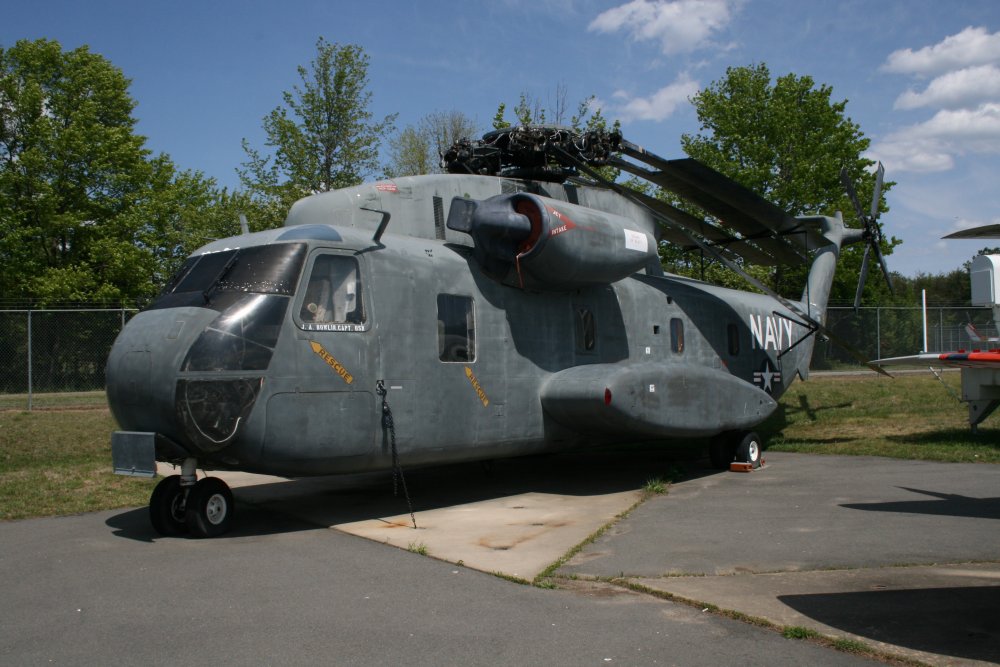 |
|
An RA-5
Vigilante. Originally intended as a carrier-based supersonic
bomber, the "Vigi" was used during Vietnam for strike reconnaissance since
it was very fast. It had the same engines as the F-4 Phantom
(General Electric J79 turbojet engines). It entered service in 1961
and was retired in 1979. |
|
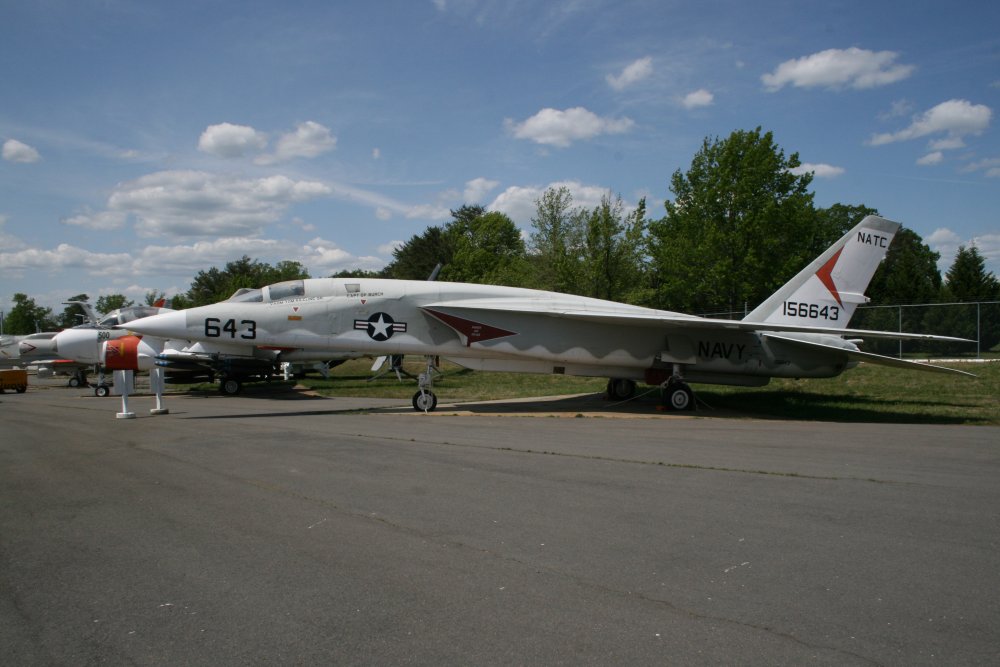 |
|
|
An F/A-18 Hornet which
is currently the mainstay of the Navy's air arm along with its supersized
brother the F-18 E/F Super Hornet. The F-18 has been a
great plane for the Navy. While it may not be the best pure fighter,
it is a good fighter and also a good bomber. They can put four
squadrons of fighter-bombers on a carrier as opposed to two fighter
squadrons and two bomber squadrons. Multipurpose aircraft are the
way to go on an aircraft carrier. And the F-18 is affordable.
What good are multi-billion dollar aircraft carriers if you can't afford
to put planes on them. The F-18 is also reliable and requires
much less maintenance per flight hour than the F-14.
My Dad is taking an action shot of another plane.
|
|
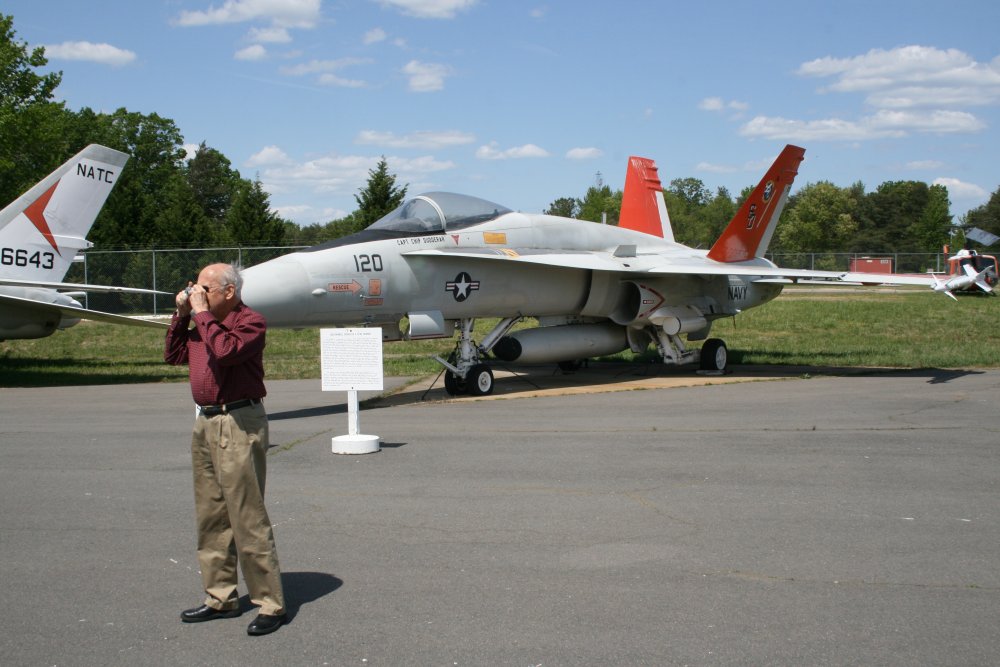 |
|
A big E-2 Hawkeye, the
carrier-based AEW (Airborne Early Warning) plane. It entered service in
1964 and is still
very much in service today. |
|
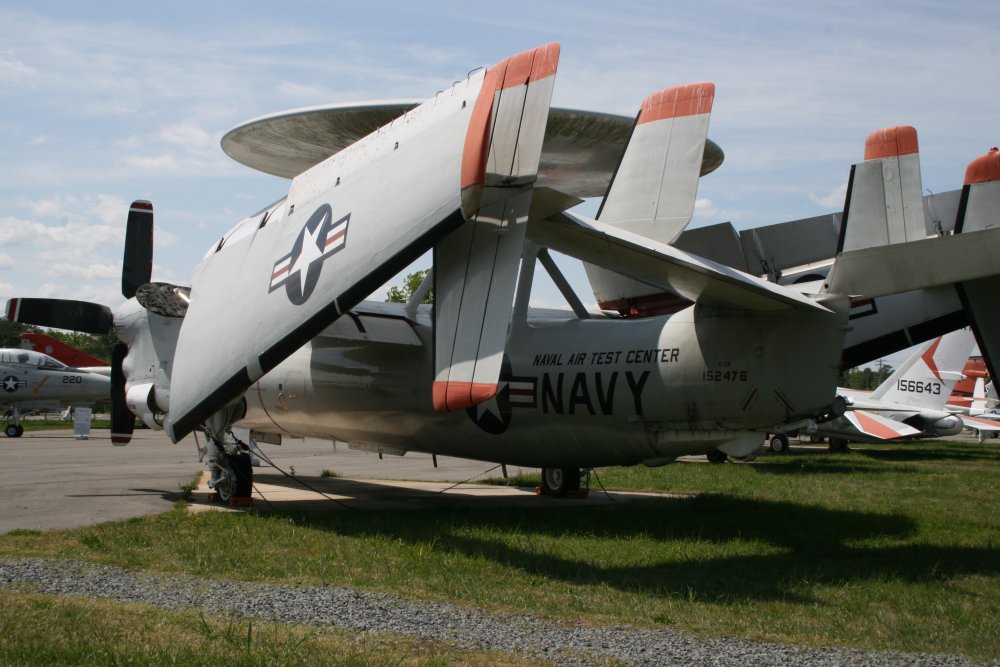 |
|
| The C-2 Tracker,
forerunner of the S-3. My Dad flew this plane and didn't care for it
much. |
|
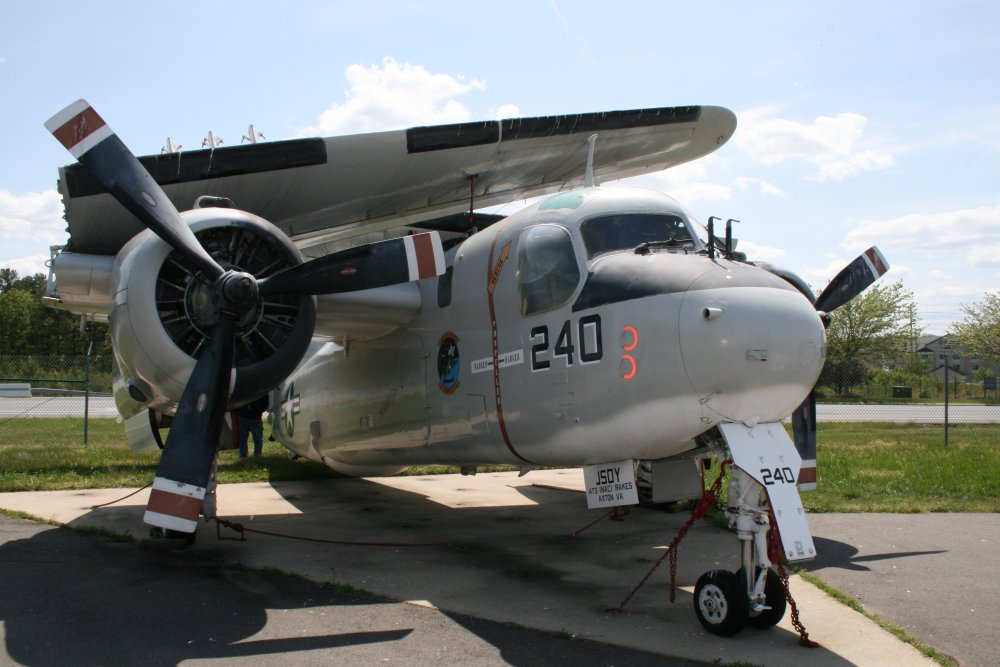 |
|
|
|
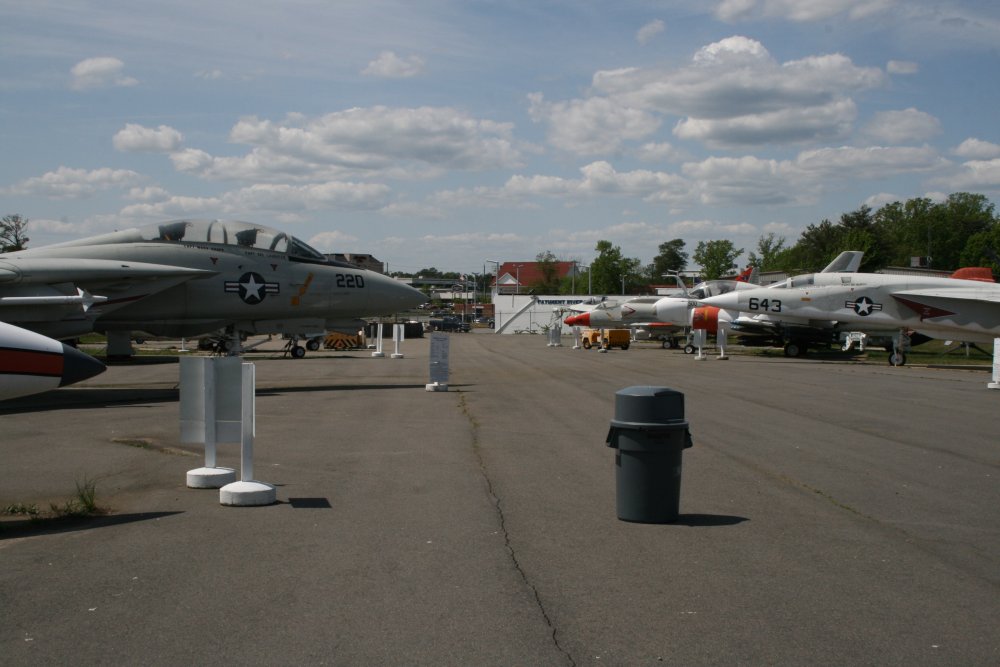 |
|
| |
| The F-4 Phantom was the
Navy's premier carrier fighter for many years until replaced by the F-14
Tomcat. |
|
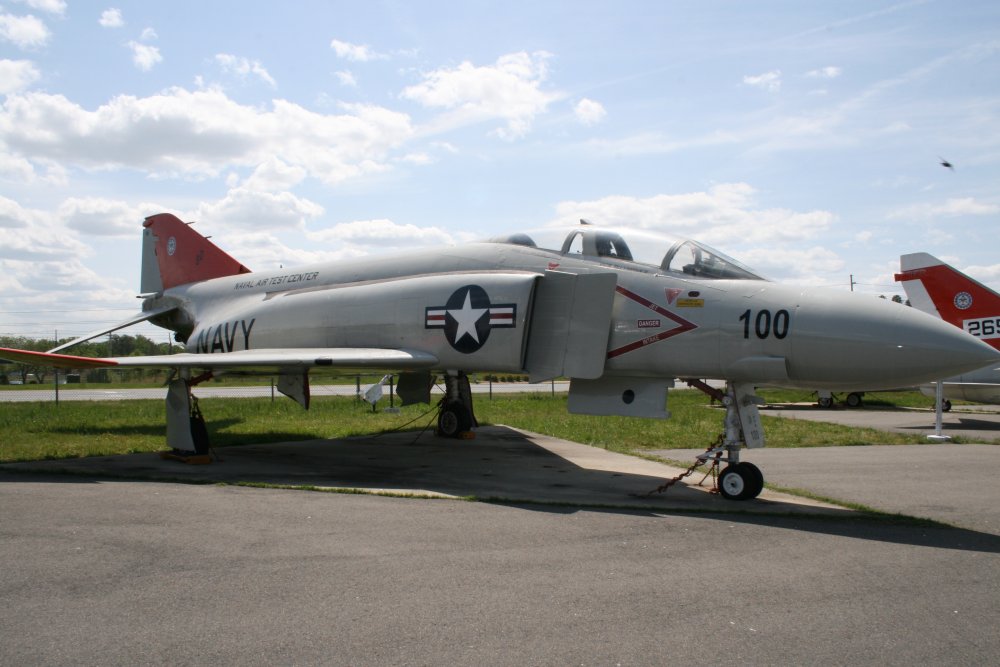 |
|
Pictured here. F-14 Tomcat which was
the Navy's primary carrier fighter until 2006 when it was retired in favor of the
F-18 Super Hornet. |
|
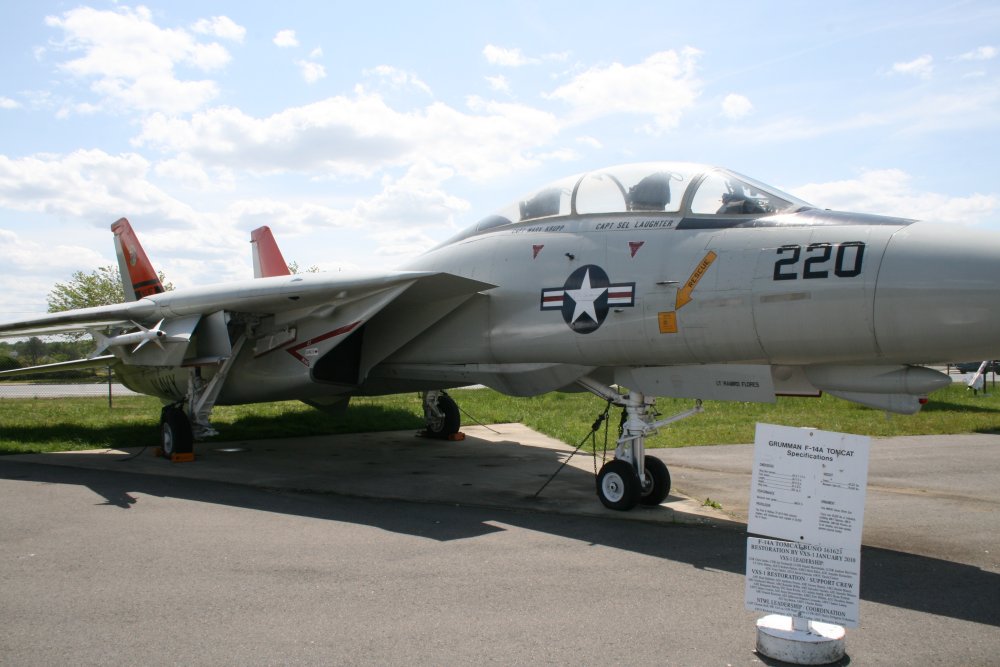 |
|
| All in all,
a nice little museum and well worth visiting. |
|
|
|
|
|
|
|



















